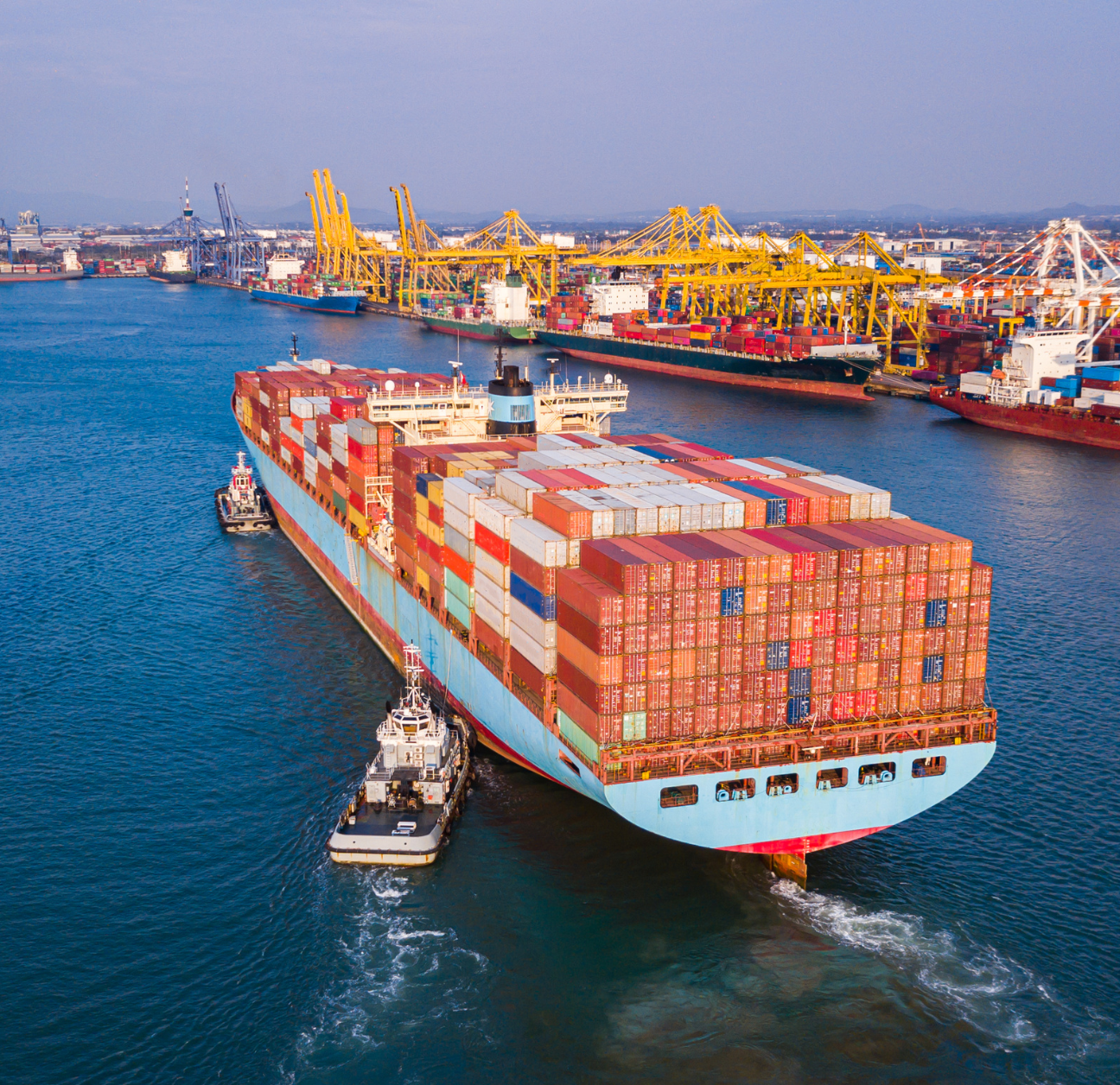Chain.io connects to any system — the newest APIs, 1980s-era flat files, and everything in between — to support the business processes that matter most: bookings, visibility into freight and shipments, rate management, invoicing, and more.
Supply Chain Integration
Managing supply chains today is harder than ever. You’ve got systems that don’t talk to each other, rising customer expectations, constant disruptions, and pressure to cut costs and do more with less.
Somewhere in the middle of all that chaos, your data is stuck in spreadsheets, siloed apps, or outdated formats that require manual cleanup whenever you need to make a decision.
Many companies still patch things with manual processes or DIY integrations that barely hold up. It might work for now, but it won’t scale. That’s why more logistics service providers and shippers are turning to supply chain integration as a smarter, more scalable path forward.
Integrated supply chain management is no longer a nice-to-have—it’s essential for keeping up with today’s supply chain management challenges. When your systems are connected, your data flows freely, your teams waste less time, and your customers get the answers they need faster. Success now depends on your ability to respond quickly to customer demands while driving meaningful cost savings across your operations.
Understanding the pain of disconnected systems (and why they persist)
If you’ve ever had to manually copy and paste shipment updates from one system into another, you already know how painful disconnection can be. These problems are common.
Manual data entry
Still typing info into spreadsheets or jumping between systems? That’s not just a time suck. It leads to errors that ripple throughout the supply chain.
Chasing updates
Need a status update from a partner? Expect to send emails, wait for replies, and scrub the format before you can use the data.
Poor visibility
Without clear insights from suppliers or partners, forecasting and planning feel more like guessing.
Missed handoffs
When systems aren’t connected, things fall through the cracks. Bookings, invoices, and shipments get delayed or lost.
These gaps slow down your business processes, reduce your ability to react to changes, and increase transportation costs. Worse, they make you look unreliable to your customers.
Part of the problem is that many companies work with legacy systems that don’t support modern integration methods. Others face resistance to change, especially from teams used to doing things manually. But sticking with the status quo just adds hidden costs: bad data, slow decisions, and missed opportunities.
What does true integration look like?
You'll hear about two main types of integration: application-to-application (A2A) and business-to-business (B2B).
The differences between them are:
- A2A is all about connecting the tools you use inside your company. Think about integrating your enterprise resource planning (ERP) software with your TMS or CO2 emissions calculator.
- B2B connects your systems with those of your partners, like a freight forwarder syncing data with a shipper’s ERP or a shipper connecting with multiple raw material suppliers.
With the right tools, both can happen at once. Chain.io’s platform is built specifically to handle both types of connections, so you don’t have to choose. You get a central place to manage the data flow across the entire supply chain.
Here are some examples to take note of:
- A2A: A forwarder integrates their TMS with a CO2 tracking tool to generate emissions reports automatically.
- B2B: A shipper shares real-time order updates with their component suppliers and logistics providers, enabling faster fulfillment and more accurate delivery timelines.
Think of Chain.io like Zapier but for supply chain integration. You connect once, and you’re plugged into a network of pre-built, supply-chain-specific connections.
Check out the full list of our pre-built connections here.
See Pre-Built ConnectionsThe benefits of supply chain integration (done right)
When your systems work together, you gain more than just convenience.
Here’s what successful supply chain integration delivers:
- Automated workflows: Cut out repetitive tasks and reduce the need for manual intervention.
- Real-time visibility: Track shipments and orders as they move so you can act faster.
- Better compliance: Meet global trade and reporting requirements without scrambling.
- Scalable systems: Easily add new partners, tools, or platforms without redoing your setup.
- Lower costs: Spend less on manual labor and avoid fines or delays from avoidable errors.
- Improved inventory management: Balance inventory levels better by reacting to actual, timely data.
- Higher customer satisfaction: When you can answer, "Where’s my stuff?" quickly and accurately, everyone wins.
How integration becomes your competitive edge
When data moves faster, your whole business does, too. Integrated companies don’t just solve today’s issues more efficiently—they’re ready to adapt to whatever comes next.
This isn’t just an IT upgrade. It’s a business advantage.
Companies that use Chain.io’s supply chain integration platform don’t have to reinvent the wheel. They plug into our existing network of systems and partners using connectors built specifically for supply chain processes.
Our customer Simon Kaye said it best: “Once integration is live, everything just flows. Fewer errors, faster reactions, and happier customers.”
Want a simple explanation?
When your systems talk to each other, you:
- Make smarter decisions
- Move faster than competitors
- Adapt without breaking things
That’s how integration turns into a real advantage.
Who benefits most—and how?
Different players in the supply chain ecosystem feel the impact of integration in distinct ways. Freight forwarders and shippers each have unique pain points, and integration can solve those directly affecting service quality, cost, and efficiency.
Let’s break it down by role.
For freight forwarders:
- Connect your TMS with tools like rate management, CO2 reporting, and shipment visibility.
- Onboard new shipper customers faster by making integration easier on their end.
- Reduce the manual work involved in delivering updates or reconciling invoices.
For shippers:
- Link your ERP or warehouse systems directly with vendors, carriers, and logistics providers.
- Get consistent, real-time data across orders, inventory, and deliveries.
- Gain better control over timelines, inventory, and fulfillment.
In both cases, internal integration creates more consistency. And across companies, horizontal integration and vertical integration help close the loop throughout the supply chain members.
Knowing how your supply chain refers to and connects every party involved—from procurement to delivery—can uncover gaps you didn’t realize were hurting performance.
What to look for in a supply chain integration partner
Choosing the right integration partner can make or break your transformation.
Here’s what to look for:
- Pre-built, logistics-specific connectors
- Support for A2A and B2B workflows
- Scalable infrastructure that grows with you
- Deep logistics expertise (not just general middleware)
If your current solution or in-house build doesn’t meet those criteria, it might be time to explore a better path.
Start with the supply chain integration importance guide to see why it matters.
Don’t let disconnected systems slow you down
Disjointed systems hold your business back—every manual task, delayed update, or mismatched data point erodes your performance.
The integration process doesn’t have to be complicated. With the right partner, you can automate workflows, reduce costs, and improve efficiency across the board.
Explore how the supply chain integration platform from Chain.io makes managing your integrations easier, adapting to change, and staying focused on delivering for your customers.
If you're ready to stop wrangling spreadsheets and start scaling smarter, we’re here to help.
Request a demo to see how you can start connecting your systems today.
Book a DemoExplore the Platform






